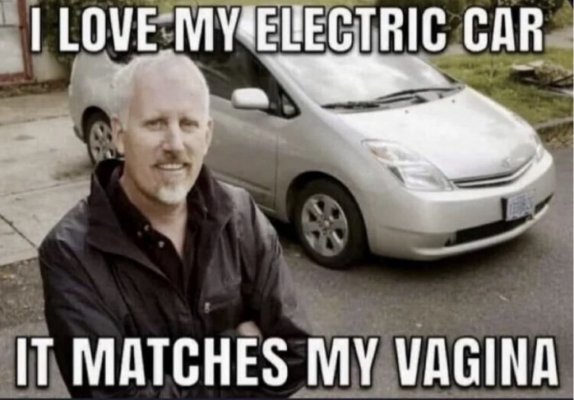Here's what an engine builder said when I asked him about MPG for my squarebody:
I will give you some realistic tips on building a Gen III/IV 5.3 for strong fuel efficiency in your older Silverado. This will assume you don't do much towing, or that you are not filling the bed up with 3000 pounds of stuff. I will keep in mind you have a 2.73 gear, and assume you have a 235/75 15 tire, which is 29 inches in diameter. This is for a proper build, that covers the engine top to bottom.
You need to maximize torque, minimize friction and pumping losses, and consider thermal management.
Starting with a good 5.3 core, if you have the option of an aluminum block, it will save you 150 pounds, maybe more, over the stock 1987 drivetrain. The weight savings helps your fuel efficiency goals. But, since iron blocks are most common, that will do for this.
The Gen III and IV blocks have some form of bay to bay breathing in the crankcase. I have seen bored holes and cast in windows of various shapes. You can improve on this by detailing the crankcase. Softening sharp edges, putting a radius on the lower edge of the bores, basically what a lot of people do when they port heads. There is quite a bit of air moving down there, and this could help reduce pumping losses by a percent or two.
You should use a flat top piston, and deck the block for zero deck clearance. An OEM replacement hypereutectic flat top piston for the 4.8/5.3 is perfect. The pistons should be installed at .0015-.002 piston to wall clearance, which is a lot for a hypereutectic but will minimize skirt friction. Set the ring gaps appropriately, along with all other clearances on the bottom end. Make certain the cam bearings are good.
Do not port your heads. Assuming you have a 706 head, do a proper valve job. Do put a back cut on the intake valve. The exhaust valve seat cut should be about .010-.015 lower than the intake. The exhaust valve margin should have a radius (Ferrea has this), the intake should have a sharp chamfer. Make sure the guides are all good and the stem to guide clearance is perfect. This is often overlooked! Deck the heads to get approximately 59-60 cc chambers.
You will need a Cometic head gasket with a 3.91 bore, that is .036 thick. This gasket, with a 60 cc chamber on a zero decked block with .020 over flat tops will give you right at 11:1 compression. This is a significant increase, and will give gains to torque as well as fuel efficiency.
For a cam, you want a 114 degree lobe separation angle on a 5.3 with 706 heads. Considering your goals, and your vehicle gearing, you want about 30 degrees of overlap. This will give you 258 degrees of duration @ .006 tappet rise. This is a very short cam. Cylinder pressure will be high, therefore torque will be good. It should be installed on a 112-113 intake centerline. A good lobe with these specs will get you approximately 200-204 degrees @ .050. With the 11:1 compression, this cam will put your dynamic compression at 9:1.
This cam will not need much valve spring. Good OEM springs will work here, and keep friction down because they are not very stiff. LS7 lifters will work perfectly, as will stock rocker arms. Use the appropriate length pushrod. The OEM LS2 style timing chain is very good, and if possible run one that isn't too tight. Do run a chain damper. A standard volume oil pump, with a lower pressure relief valve spring, will be perfect.
The stock truck intake makes good torque where you want it. Ideally, you want headers with 1 1/2 inch primary tubes as long as possible. Such headers probably don't exist. Most companies sell 1 3/4 or 1 7/8 inch headers. Those are way too big, it seems bigger is better syndrome has infected header choices. If you can't get 1 1/2 inch primaries, 1 5/8 would be a reasonable compromise. You will have to talk to some header companies and see. I think you should run a full 2 1/4 dual exhaust system with real mufflers, like large case Dynomax or Magnaflow.
You will need a fuel system that can maintain pressure at, or just above, the max fuel pressure recommended for your injectors. This will better atomize the fuel. You need a very efficient cooling system, and will want coolant temps around 200 to 220 degrees F. Not less.
This may require a cooling system pressure over 16 psi. Give this careful thought, you don't want the engine too cool, yet you have a high compression ratio and cylinder pressure is significant.
I assume you will probably use the 4L60 trans, which is fine. This should be tuned to have a lean idle and part throttle cruise. You will need to find a tuner that knows a 13:1 air fuel ratio is not lean. At idle, you might want afr of 15-15.5:1 or so, and as lean as you can stand at steady state part throttle cruise.
Some other things can help, like a smaller, lighter, low stall torque converter, running 36-42 psi in the tires, an aluminum drive shaft, and an electric cooling system fan.
These details add up significantly. This type of build is unconventional for many people. Careful attention must be paid to tune, cooling, and engine assembly. If anything changes, I would probably suggest some different cam specs. For example, a 243/799 head would be a different cam. You might also consider your driving habits.
The same concepts of this build can be applied to many engines, including your old 350. Some people might prefer to build a 312 cubic inch Gen III engine from a 4.8 for max fuel efficiency. But, that's a separate conversation.



